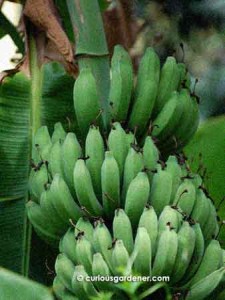I first heard the term permaculture when I was looking for tips on successfully growing ginger. I now know that ginger is one of the easiest crops to grow, but at that time, had already botched up one attempt. To me, the person who wrote about it had a fascinating attitude – just do the planting and let nature take over (generally speaking). It made a lot of sense – after all, nature knows best, right?
Now, I’m not exactly a tree-hugger, but I have the highest respect for nature. It’s funny how we try to shape our gardens to our ideals, yet once we slacken our efforts, nature just continues. So, why fight it?
I got a lot of interesting information from a site called Tropical Permaculture. It’s a good place for newbies to start from. What I especially liked was that it was one of the first sites I encountered that shared a climate similar to ours. On top of that, there was a tonne of information about growing different plants the permaculture way.
That was the snowball that started rolling downhill for me. I needed to know more, so I checked out our local library catalogue but found it lacking where permaculture was concerned. So, I searched online and ordered a book called The Permaculture Home Garden by Linda Woodrow. Once I got it, the book was almost glued to my hand. Okay, we may not be able to use it wholesale in Singapore because we’re so land scarce and we don’t have some of the plants mentioned, but the principles can be used; we just have to adapt them a bit.
Here’s the gist of this book (out of respect for the author, highly condensed):
- permaculture, in layman’s terms
- permaculture layouts
- working with earth
- managing plants
- managing pests
I found this an easy read because it was well written and just right for permaculture newbies. There are some assumptions that we have a certain level of gardening knowledge, but on the whole, it’s an inspiring read that gets down to the nuts and bolts of many things. It is, however, written for those with an actual patch of garden (big or small), although apartment gardeners will definitely learn from it. What I like and want to apply are:
- soil replenishment practices
- companion planting
- learning how to work with/around the creatures that already live in the garden
- create a balanced, harmonious garden that generally maintains itself
Unfortunately for me, I am a kinesthetic learner, which means I work best by doing things by touch and feel rather than applying something from a book. So, like the inventors of the world, I will be experimenting a lot to find the best way to make my garden permaculture-worthy. I’m happy with anticipation for now. My learning curve continues!
© 2011 curiousgardener.com All rights reserved.

